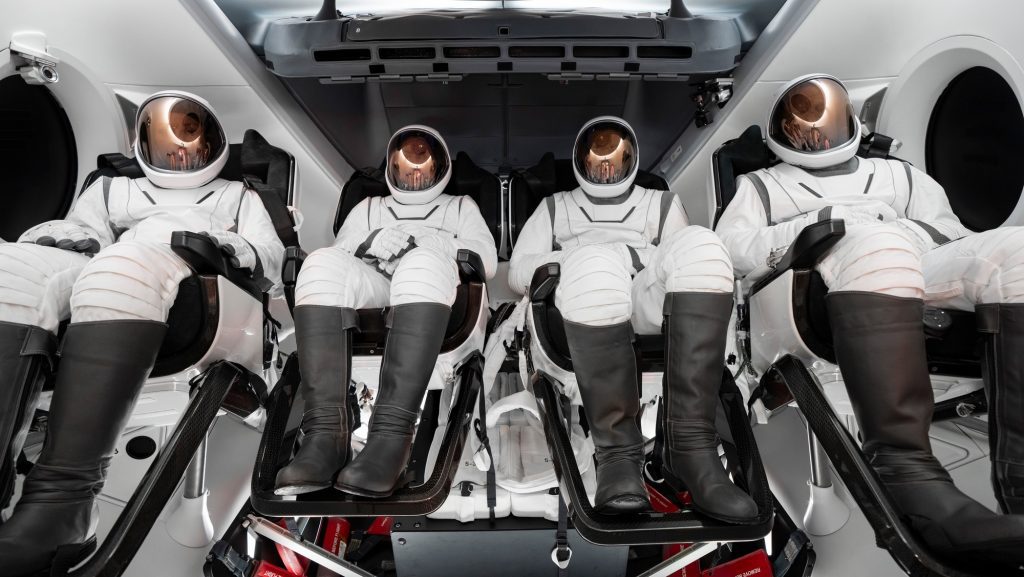ORLANDO, Fla. — SpaceX has finally revealed the spacesuits meant for spacewalks that will be used on an upcoming private spaceflight.
The company showed the design of the extravehicular activity (EVA) suit on its website and social media on May 4. website The suit is based on the existing pressure suits worn by astronauts on Crew Dragon flights but is specifically made for spacewalks.
The upgraded suit features new joint designs that are flexible until pressurized, improved thermal control, and an enhanced helmet with an exterior coating that acts as a sun visor. It also includes a camera and heads-up display providing information about the suit's status during the spacewalk. Umbilicals provide life support for the suits.
The suits will first be used on the Polaris Dawn mission, a Crew Dragon private spaceflight within the Polaris program of missions led by billionaire Jared Isaacman.
Gillis mentioned in a discussion hosted by SpaceX on social media on May 4 that the spacewalk is expected to last approximately two hours, including depressurizing the cabin at the start and repressurizing it at the end. Two people will exit the capsule using a device called a 'skywalker' at the front hatch with handholds and interfaces to assist them in going through the hatch.
The spacewalkers will undergo a “test matrix” to gather data on the performance of the EVA suits. This includes evaluating mobility and movement in the microgravity environment, as well as how the suit performs. The entire process will involve a series of tests for the duration of the time spent outside the spacecraft.
The suits have undergone extensive ground testing, including a test where the entire Crew Dragon capsule was placed in a vacuum chamber and the cabin was depressurized with four “spacesuit simulators” inside. “That all worked as expected,” said Stu Keech, vice president of Dragon at SpaceX. “That’s equivalent to the uncrewed Demo-1 flight” of Crew Dragon in 2019.
The spacewalk also required modifications to Dragon itself, such as a repressurization system to restore cabin pressure after the spacewalk and changing some materials based on their outgassing properties.
The suits will also be used as the pressure suits worn during launch and reentry on typical Crew Dragon missions. SpaceX plans to eventually combine the two suits into a single one, with some changes already incorporated into pressure suits starting with the Crew-6 mission based on what the company learned developing the EVA suits.
“The goal of this suit is to be our first design of the EVA suit, and then, just like all over SpaceX products, we’re going to continue through block upgrades as we go forward and learn,” Keech said.
Polaris Dawn plans
The spacewalk is an important part of the upcoming Polaris Dawn mission, and the development of the spacesuits was a determining factor for the flight, originally planned for late 2022 but delayed multiple times since then.
Polaris Dawn is now set for early summer, and SpaceX expressed confidence that the schedule would remain the same. “Polaris Dawn is the next major operation for the Dragon program,” Keech said. “At present, the entire team is working towards a launch date in early summer of this year.”
The Falcon 9 launching the Polaris Dawn mission will put the Crew Dragon spacecraft into an elliptical orbit of 190 by 1,200 kilometers, Menon said. The spacecraft will then raise its apogee to 1,400 kilometers, the highest altitude for a crewed mission since the Apollo 17 crewed mission in 1972.
Dragon will stay at that apogee for approximately seven orbits, gathering data on the increased radiation environment, before lowering to 700 kilometers. This is the altitude at which the mission will carry out the EVA. The mission will stay in orbit for five days, Isaacman said, conducting experiments and testing the spacecraft's ability to communicate through SpaceX’s Starlink constellation.
The flight profile, with the higher altitude and the spacewalk, brings new risks. Keech said SpaceX had assessed both the radiation and micrometeroid/orbital debris impact risk for this flight profile. “The Polaris Dawn mission, for both of those, will be within the risk that we accept for a six-month ISS mission,” he said. “We want to make sure that we’re not unnecessarily taking risks, but you do have to expand the envelope and do it methodically.”
“We certainly are briefed constantly on where the differences are between our mission and a normal profile,” Isaacman said, “and feel really comfortable they’ve been addressed.”









